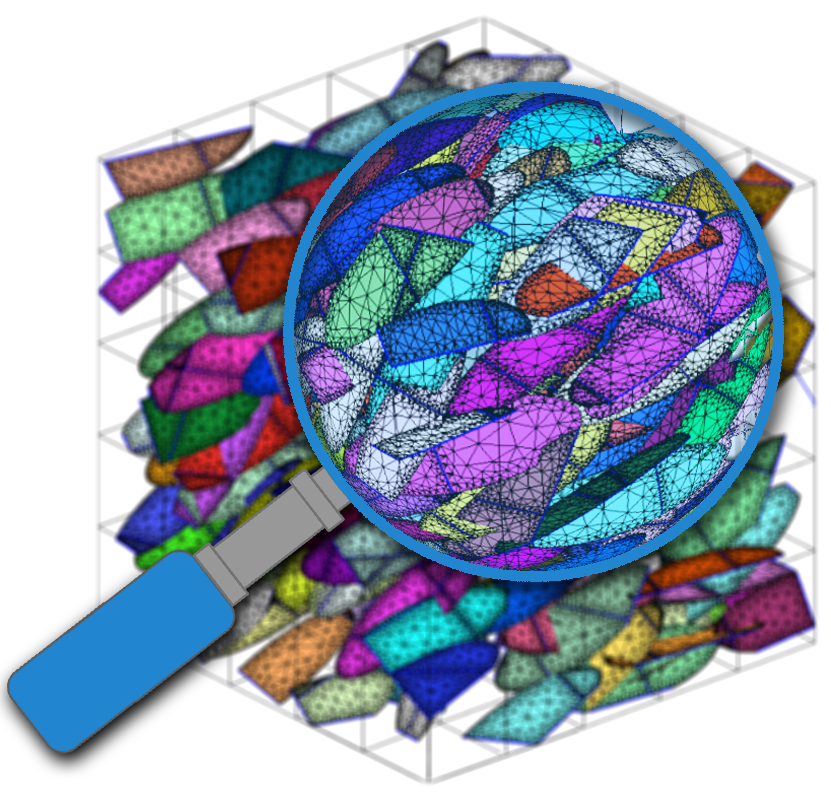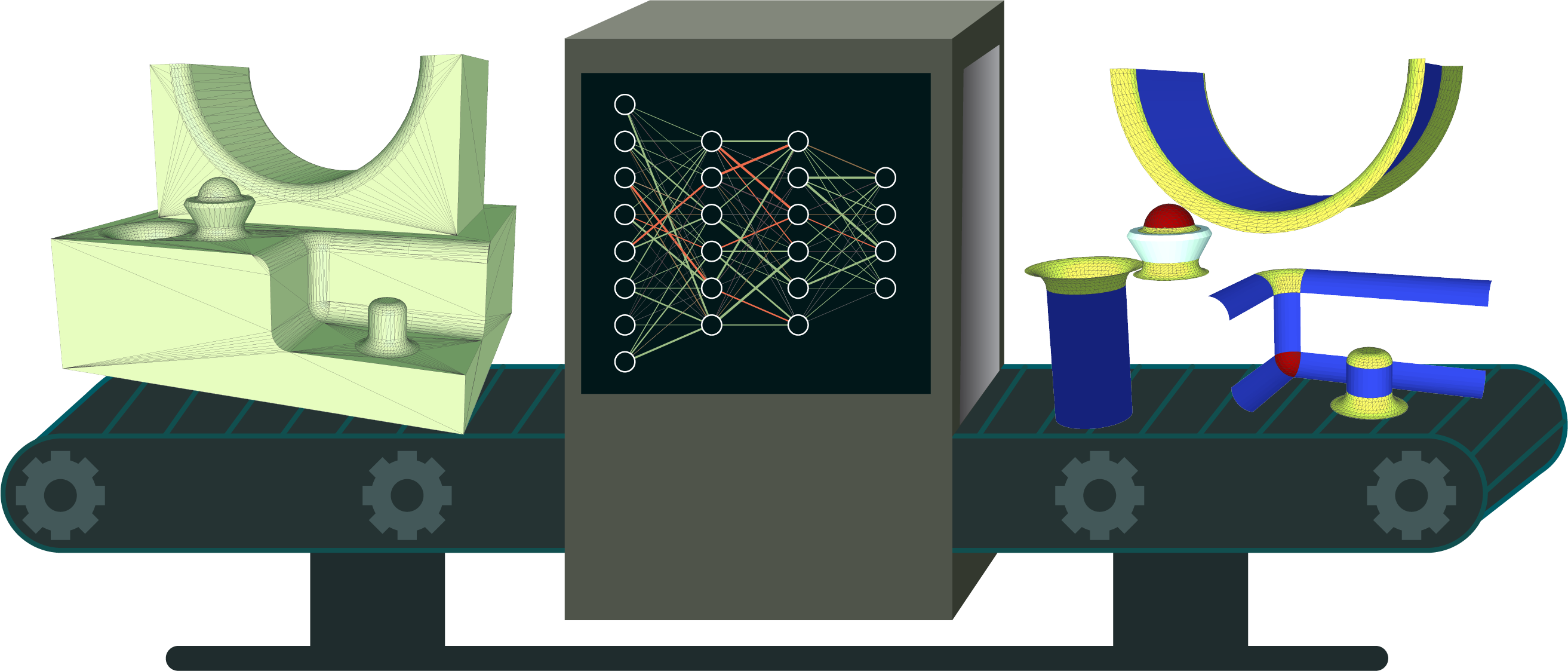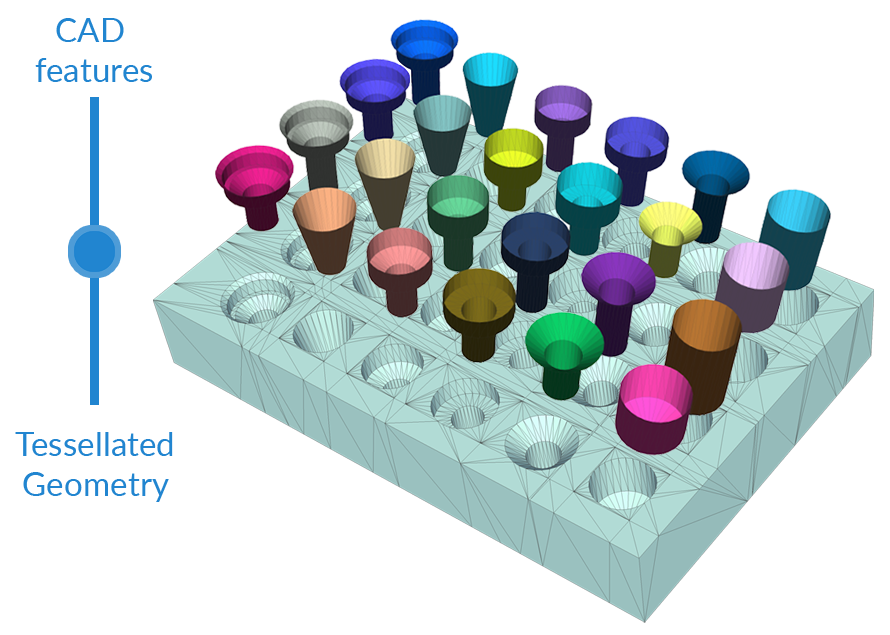About CCTech research
In our constant endeavor towards the democratization of technology into the hands of the common man, we have chosen Computational Geometry & Simulations as our current domain of focus. The reason being that highly scientific tools have always remained accessible to a very few communities around the world. For example, simulationHub is the result of CCTech's dedicated efforts to bring the power of CFD to the common man.
We frequently collaborate with researchers from our own product LearnCAx's graduates and from universities around the world.
We research to :
Provide powerful and automated tools which assist engineers to focus less on the challenges of the present technology to solve their problem
To develop futuristic visualizations of simulations using modern day human-computer interface technologies
Bring the power of highly scientific engineer technologies to the low-cost mobile devices
Challenge the traditional ways of delivering high-end scientific tools to the users
Research areas
Machine intelligence
Our research work focuses on bringing machine intelligence into the field of Computational Geometry & Computational Fluid Dynamics. Today, we have harnessed the power of machine learning in image processing, healthcare, business intelligence, natural language processing, etc. The pace at which our world is heading towards cheaper and faster computation power is demanding the scientific engineering software to become easier as well as powerful like never before.
Our research direction is to create engineering apps that can keep on getting smarter day by day. Currently, we work on adding machine intelligence to our product simulationHub. We also research intensively in identifying 3D Geometries by understanding complex patterns present in them similar to image recognition.
Augmented reality / Virtual reality
AR/VR is a cutting-edge technology. As it deals with computer-generated graphics, it has always been of our interest. In recent times, we have experienced a boost in AR/VR based games and other demonstration work. Our focus is to put the power of AR/VR into scientific engineering usage like designing AR/VR based futuristic user interfaces, web integration of AR/VR into our cloud products.
Currently, we are researching new methods to overlay CFD simulation results into the real world using ARCore & ARKit libraries. We are pushing the limits of Web AR libraries, which are currently under development, to bring AR into simulationHub. Our research also includes bringing HMD (head mounted device) support to our web & desktop products.
Feature recognition.
Triangle mesh formats have gained wide popularity due to the simplicity of their representation. They find use in several applications such as modelling, animation, 3D printing etc. But there is still one major drawback of using this format - unavailability of high-level feature data. Feature information is useful and can help increase the interoperability between various CAD, CAM, and CAE software.
Here at CCTech, we are developing robust techniques for rebuilding high-level feature information from the low-level mesh data which would enable seamless integration between such systems. To this end, our research focuses on the development of robust and efficient algorithms for :
Automatic mesh segmentation(using rule based, pattern based techniques)
Feature detection(holes and blend features)
Feature suppression
In collaboration with the Machine Learning research group, our current work in this area also explores the development of machine learning based techniques for free-form features recognition from mesh models.
Geometrical feature recognition
Triangle mesh formats have gained wide popularity due to the simplicity of their representation. They find use in several applications such as modelling, animation, 3D printing etc. But they do not possess high-level feature information which is crucial for interoperability between various CAD, CAM, and CAE software.
At CCTech, we are developing a toolkit for automatically detecting CAD features from tessellated geometries. We have so far achieved capabilities for recognition of features such as- shape primitives(cylinder, torus, sphere & cone), G1 continuous features (fillets/blends) and Hole features (such as through-holes, blind holes, countersink holes, counterbore holes etc.)
Our research has been focused on developing robust algorithms for mesh segmentation, surface fitting, feature detection, and feature suppression.
simulationHub results in augmented reality on web using ARKit / ARCore
A web application that allows users to view simulation results through a smartphone camera directly in their real-world environment. Users can position the results in their environment with a single touch, and walk around it to inspect the visualization in detail, thus providing a true Augmented Reality experience. The app is powered by three.ar.js and WebARonARKit.
Adding virtual reality to simulationHub implementation of Autodesk Forge viewer
It all started way back with a basic research to drive Forge viewer's camera movements with the mobile device's orientation sensors. Currently, the work focuses on bringing full-scale virtual reality support to the simulationHub web application. WebVR still being an experimental feature in browsers, the team is dedicated to exposing VR functionality to simulationHub users as a beta feature.

Futuristic Voice Driven Human-Computer Interfaces for simulationHub
With each decade we are seeing a new form of human-computer interface and in current decade voice user interface (VUI) emerged as a most natural form of interaction between humans and machines. VUI allows people to use voice input to control computers and devices.
'simulationHub voice assistant' powered by AWS Lex and Polly services interacts with simulationHub. AWS provides services for automatic speech recognition (ASR), natural language understanding (NLU), and text to speech (TTS). simulationHub voice assistant takes voice input and triggers action on involved intents. A user can do various workflow (create a simulation, get status of credits, navigate through the simulation stages etc.) using simulationHub voice assistant.
Future research involves integrating simulationHub voice assistant with Google assistant, amazon Alexa, IFTTT and makes it more robust and user-friendly.
Making memory intensive flow simulation results web-ready
In CFD and other branches of engineering simulation post-processing feature involves converting numerical outcome of solver results in a presentable format as per the user desires. These presentable results are required to be visualized in 3D graphical format. As most of the engineering applications are moving towards web app form, they are facing the challenge in providing those memory intensive simulation results in a web browser without losing it's high fidelity. Also, most of the web browser lacks the required computing capability to do any of post-processing computation within the webpage.
Our research team has come up with breakthrough approaches to tackle these problems. We are using combinations of big data techniques, serverless computing and cloud storage to provide user required simulation results in fractions of seconds. In simulationHub gallery projects, you can see implementations of our navel techniques in live demos. This has powered simulationHub apps to provide high fidelity flow simulation results such as isosurfaces, contour planes, torque or drag curves at runtime to millions of users simultaneously.

The meshing of a large number of intersecting surfaces
Computational Fluid Dynamics requires good quality conformal mesh for solving the numerical equation. Surface meshing is vast research domain and meshing methods used in Computational geometry are still evolving to handle complex surfaces accurately and efficiently. Mesh on the single surface can be easily generated but challenges are to handle meshing constraint effectively complex intersecting and manifold surfaces.
We tackled those challenges using divide and conquer technique. When we have the large number of intersecting surfaces, we breakdown domain to create smaller one with less number of meshing constraint. We also used high performance and intense parallelism techniques to get effective time and space complexity. We also overcame a challenge to display a large number of the triangulated mesh using advanced OpenGL techniques. Advance surface meshing is required as some mesh element may not achieve the desired quality requirement. Laplacian smoothing and point, line, and area clustering techniques used in Advance surface meshing.
Success is to generate 117 million mesh on 0.1 million intersecting surfaces in a couple of hours.
Geometry defeaturing and intelligence for meshing
Automation in CFD has smoothed out the route from model to the solution. There are still some problems areas which make it challenging to bring automation in meshing process. More than 50% of the manual efforts in a typical CFD simulation goes in generating the computational model and most of that time is spent in surface preparation and CAD repair.
For example, a fully detailed CAD part contains very small gaps, where welds, screws, rubber seals etc. are to be placed. These are likely to affect the quality of meshing or even prevent successful mesh generation. Therefore, some degree of geometry simplification and defeaturing is necessary before building a computational mesh suitable for the analysis.
At CCTech, we have come up with intelligent, robust and efficient algorithms for geometry simplification. These algorithms intelligently handle dirty geometry, CAD clean up process and make the geometry ready for building the computational mesh. It does not only save time but also provide a truly seamless simulation experience to our users.

Geometric feature recognition from STL model using machine learning
Machine learning is research domain that excited many kinds of research from its inception. Our research team is applying machine learning techniques to solve Geometric problems.
Triangle mesh formats such as OBJ and STL have become ubiquitous due to the simplicity of their representation but they lack in rich feature information such as a hole, fillet etc required in CFD and CAM software.
We are using Google's TensorFlow - machine learning library for creation of the neural network. We did feature engineering for converting STL file geometry data into machine learning features and labels. After fine tuning of neural networks, we able to identify the Fillet surface and Spherical triangle mesh with accuracy more than 80%.
Further research is to explore Geometric Neural Networks and different ensemble techniques to make our machine learning model more robust and accurate.





